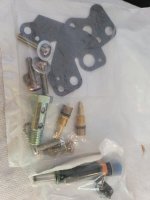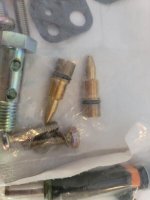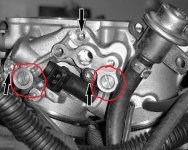:dontknow:

opcorn:Accidental **BONUS**Spare parts:roflblack:
Yeah, I gotta :agree: - I really doubt those extra bits have anything to do with your issue, unless maybe they've been in & out a few times for some reason & the 'O' rings are shot?? :shocked: Then again...... :dontknow:
...... I'm thinking I may just need to remove the whole throttle body so I can give it a good cleaning with carb cleaner, not sure what else to do at this point.
IIRC, there
were some throttle body issues on earlier versions of these Spyders; and again, IIRC, I reckon there was a recall for the pre-2013 models and a software update for the 2013's sometime around mid 2013 or so that resolved these issues, particularly for all the newer of the V-Twin models....

So maybe you might want to do some searching thru the older threads here to see if there's anything in them to help/what they came up with back then; &/or possibly get some of the technical details or at least the applicable TSB details to see if anything in them can help? :dontknow: But it does look like you've covered most of the likely causes, so I'd say it's probably gonna be a bit of a lottery from here on in? :banghead:
Mind you, just a bit of a thoughty here, and
probably just me clutching at straws; but have you checked the injector pulse circuit &/or relay/s?? I recall tracing an odd & otherwise frustratingly 'resistant to any of the usual fixes' case of '
the occasional stumble when cranking full throttle at slower rpm' to an injector pulse relay that was breaking down under load once it got
a little bit warm but not quite up to 'normal running temperature', altho all the repeated checks done on it before then had suggested it was fine....

. It was only by fluke when I happened to be in the process of looking for other things when I thought I'd check that relay yet again for Judtin's sake, and so I happened to catch it right when the stumbling occurred, revealing that the relay wasn't
always working as it should; but once I saw that it
WAS stuttering/stumbling & so interrupting the smooth timing of the injector pulses, a simple replacement of the relay resolved the problem!

hyea:
Can't tell you much more, can't remember much more...

But maybe replacing a relay or two, then possibly swapping them around might be worth a shot? :dontknow:
Just Sayin'

Good Luck! :cheers:



